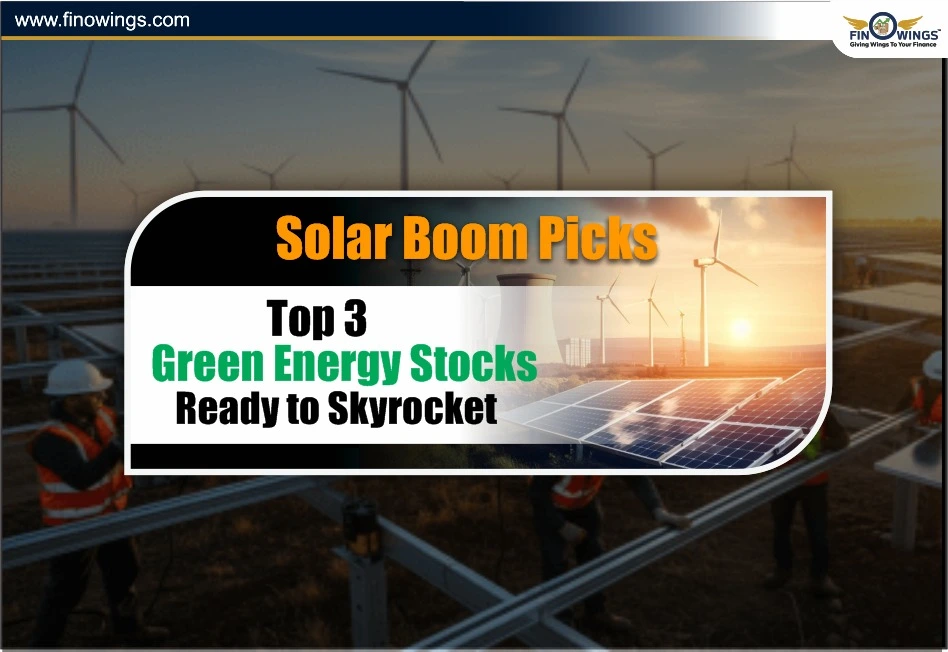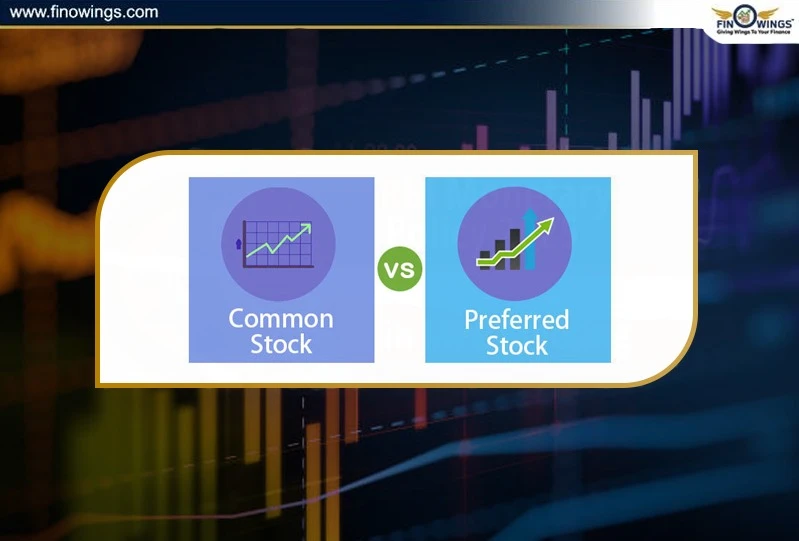Home >> Blog >> Solar Boom Picks: Top 3 Green Energy Stocks Ready to Skyrocket
Solar Boom Picks: Top 3 Green Energy Stocks Ready to Skyrocket

Table of Contents
- Why Solar and Green Power Companies Matter
- Top 3 Green Energy Stocks
- How to Build a Solar/Renewable Energy Investment Strategy
- Benefits of Investing in Green Energy Stocks India
- Risks
- Green Energy Sector Allocations in the Union Budget for 2025–2026
- Factors to Consider Before Purchasing Green Energy Stocks
- Conclusion
India has one of the most ambitious goals for solar power and carbon neutrality in the world, so now is the perfect time to start researching solar energy stocks. In this blog, we will analyse the story behind green energy stocks in India, showcase three of the best solar stocks, and explain how to construct an intelligent thesis for solar sector stocks.
Why Solar and Green Power Companies Matter
By 2030, India is targeting 500 GW of non-fossil fuel energy. Solar energy will be the primary contributor.
Here are the tailwinds for the sector:
-
Solar modules are getting increasingly economical and effective.
-
Government programs, funding, and audacious goals.
-
Green energy is gaining institutional support.
-
Increased use of clean electricity in data centres and EVs.
This makes the category of solar sector stocks and top solar stocks in India relevant for medium to long term investors.
Top 3 Green Energy Stocks
These are the best renewable energy stocks in India in October 2025, based on 5-year CAGR as per 5paisa:-
1. NTPC Ltd: NTPC Green Energy Ltd., a division of NTPC Ltd, is committed to creating renewable energy projects, such as solar, wind, and green molecular projects. Due to its organizational goal of organic and inorganic growth, it will achieve a capacity up to 60 GW by FY 2032 to be a leader in the green energy sector.
2. Adani Green Energy Ltd: Adani green energy, Ltd. is a reputed pure-play renewable energy company in India that develops, owns, and operates utility-scale solar and wind projects. Its portfolio is quickly growing to a number of gigawatts.
3. Tata Power Company Ltd: Tata Power is the largest vertically integrated power company in india with transmission, distribution, generation and renewable with a major concentration on sustainable power.
(Source: Screener)
How to Build a Solar/Renewable Energy Investment Strategy
In case you want to add this theme to your portfolio, here are actionable steps:
Define allocation: Since the sector has a higher volatility, consider allocating maybe 5-10% of your total equity allocation for solar/green energy stocks.
Mix large and smaller names: For balance, have a combination of big companies and smaller growth companies.
Time-horizon: Time is a long-play, and an optimistic choice will be a minimum of 5-10 years, based on the gestation time of the project, regulatory cycles and lead times of energy transitions.
Oversight the execution and policy: The major risks encompass delays in project implementation, interest rates and subsidy reductions.
Rebalance once a year: In case one of your companies takes up a strong place in your portfolio, it may also be a good time to consider rebalancing and investing in new ideas or other areas.
Benefits of Investing in Green Energy Stocks India
-
In India and other nations, governments are being vigorous in encouraging renewable energy as an alternative of fighting climate change. Due to the consistent support of regulation, subsidies and increased demand, the long-run value will be created by the stocks of green energy.
-
Companies in the solar, wind and hydro sectors are fast-growing, less-carbon sectors.
-
India has a number of incentives to promote the renewable energy sector which include tax breaks, low-interest loans and laws that are pro-FDI. All these incentives improve stability and profitability in investment in renewable energy.
-
Institutional investors are becoming very popular with companies that adhere to the environmental, social, and governance (ESG) requirements. International investors regularly purchase green energy companies, increasing their value and liquidity.
-
Investing in companies associated with the solar and renewable industries allows you to make money and contribute to the environment.
Risks
Regulation and policy changes - The subsidies may be abolished and approvals taken on projects.
Commodity and input inflation - Solar panels rely on other countries to provide polysilicon, modules and other components that can face the cost squeeze.
Execution and project risks - Solar power parks and power purchase agreements (PPAs) are time consuming. Profitability can be impacted by delays and tariff issues.
Market assessments - Players may have excessive valuations, expecting growth that may take time to materialise, therefore carrying risk.
Green Energy Sector Allocations in the Union Budget for 2025–2026
In the 2025-2026 Union Budget, the Indian government has given more funding to the growth of renewable energy plans. This involves growing investments in solar, wind and electric car infrastructure. The budget also covers plans for better connectivity of the grid and storage options that will lead to enhanced reliability of renewable sources of energy.
It is anticipated that these modifications will increase the value of green energy equities and draw additional capital to the industry.
Factors to Consider Before Purchasing Green Energy Stocks
Take into account these elements before to purchasing green energy stocks:
-
Make sure that the company enjoys good renewable energy policies.
-
Search firms that have realized successful projects in renewable energy in the past.
-
Keep abreast of the conditions in the market and the technological advances in the green energy market.
-
Decide the risk level you are comfortable with and invest in the stocks that suit your objectives.
Conclusion
Investments in solar energy stocks and green energy companies have immense growth potential in India. Best stocks in solar energy offer a blend of large industry players and new entrants providing good risk adjusted growth.
Companies to consider picking solar stocks include Adani Green, KPI Green, and Tata Power. This can be a thematic investment with potential to enhance your portfolio if a thoughtful investment in renewable energy is undertaken.
DISCLAIMER: This blog is NOT any buy or sell recommendation. No investment or trading advice is given. The content is purely for educational and information purposes only. Always consult your eligible financial advisor for investment-related decisions.
Author
Frequently Asked Questions
Yes. With India targeting 500 GW of non-fossil fuel energy by 2030, solar stocks are gaining strong government support, rising demand, and long-term growth visibility. However, investors should consider risks like policy changes and project delays.
Some of the most popular renewable energy stocks in India include:
-
Adani Green Energy
-
Tata Power
-
NTPC Green Energy
Others like KPI Green and Waaree Energies are also gaining traction among investors seeking high-growth opportunities.
Experts suggest keeping 5–10% of your equity portfolio in thematic sectors like renewable energy because the sector is high-growth but also volatile. A mix of large-cap and emerging companies works best.
Key risks include:
-
Changes in government policies and subsidies
-
Rising costs of solar modules and components
-
Delays in project execution
-
Overvaluation due to hype
Understanding these risks helps investors pick stronger, more stable companies.
Look for companies with:
-
Strong execution track record
-
Healthy debt levels
-
Stable cash flows
-
Good renewable project pipeline
-
Supportive government/regulatory environment
This ensures you choose solar stocks with real long-term potential.

















